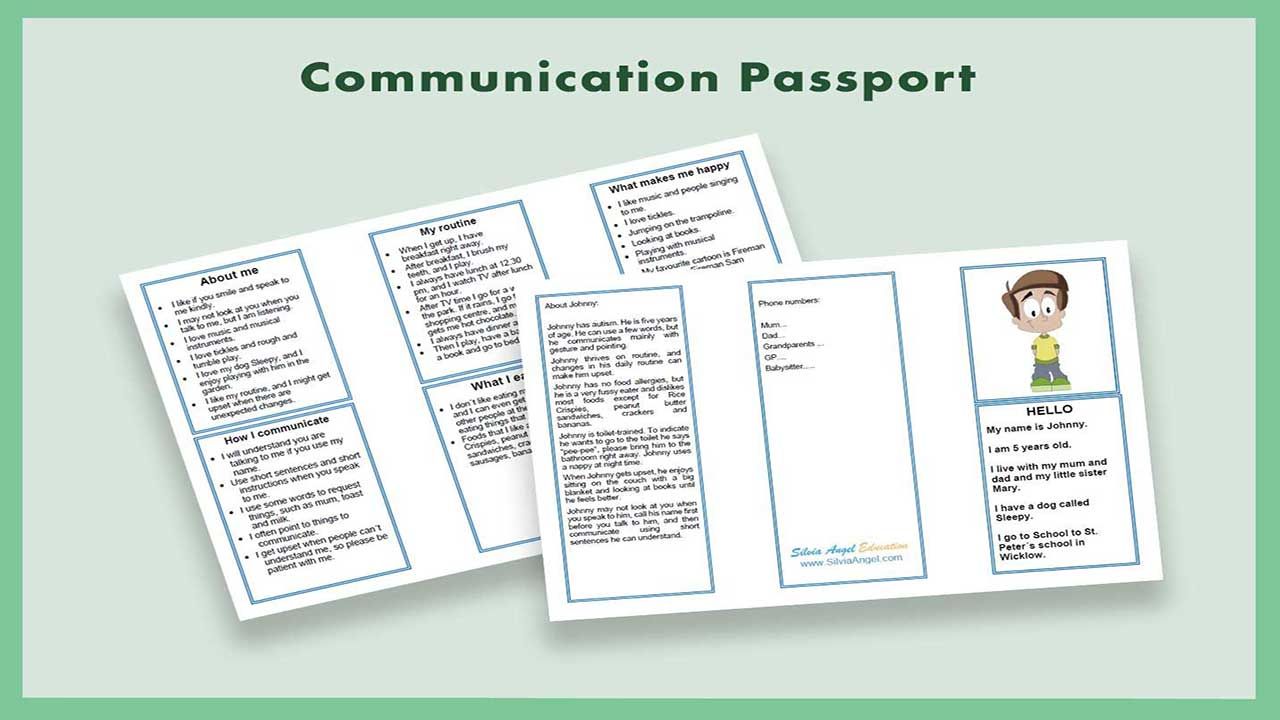Communication Passport
May 30, 2024
One of the main questions for parents of children with disabilities over the last two months has been, "What would happen if I became sick? Who would look after my child/children?" This is a concern for all parents, particularly parents of children with autism or significant language delays.
Children with autism often have difficulties with social interaction, including establishing and maintaining relationships and communicating with others. This, in turn, affects how they interact with family members and friends. Some family members might struggle to understand or cope with an autistic child; therefore, parents may have a limited number of people with whom they can leave their child.
Parents need to identify those who can help look after their child/children in an emergency and make a plan based on this.
Time to make a plan and create a communication passport.
What is a communication passport?
A communication passport is a document that shares important information about your child to help other people to get to know him or her. Parents and teachers usually write the passport, but if your child can contribute, make sure they have their say. The passport is an important document, particularly when your child has to go to unfamiliar places with people they may not know well.
The passport has information about the little things that are very important and unique to your child. For example, your child may only eat a particular brand of bread or be very sensitive to loud noises, or there may be specific things that they find upsetting. The passport will contain all of this information, so if your child has to spend time with someone else, they will have this valuable information to hand.
How to write a passport?
The passport is written from the child's point of view and must be easy to understand. You can include pictures, symbols and drawings to make it more personal, so the child might even want to show it and read it to others.
Passports are typically printed and laminated or created in a digital format for easy sharing.
Make sure you include all relevant and up-to-date information, such as what the child likes and dislikes, what is the best way to do things with the child, how to communicate, what to do when the child is upset, and daily routines.
Who should have a communication passport?
Anyone needing help communicating important information about themselves needs a communication passport. Even verbal children with autism can benefit from having one because they may have difficulties communicating if they are under stress or overwhelmed.
Having an updated passport can also help relieve stress for parents. In an emergency, they will know that all the information is in one place, and whoever is looking after their child will have the information they need.
How can I make one for my child?
I have created a small communication passport template for you to populate - you can download it here.
This is a basic passport you can fold like a flyer, so always have it in your child's bag.
Before filling out your child's communication passport, have a look at this sample passport to give you an idea of the type of information you can include.
It only takes a short while to fill out this communication passport, and it will give you peace of mind that whoever is looking after your child has all the information they need in an emergency.


